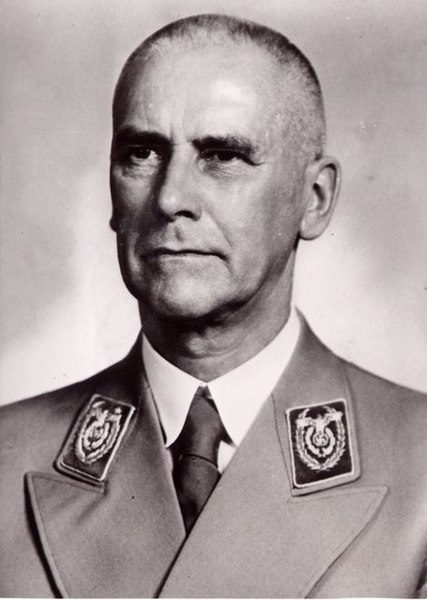The Nuremberg executions took place on 16 October 1946, shortly after the conclusion of the Nuremberg trials. Ten prominent members of the political and military leadership of Nazi Germany were executed by hanging: Hans Frank, Wilhelm Frick, Alfred Jodl, Ernst Kaltenbrunner, Wilhelm Keitel, Joachim von Ribbentrop, Alfred Rosenberg, Fritz Sauckel, Arthur Seyss-Inquart, and Julius Streicher. Hermann Göring was also scheduled to be hanged on that day but committed suicide using a potassium cyanide capsule the night before. Martin Bormann was also sentenced to death in absentia; at the time his whereabouts were unknown, but it has since been confirmed that he died while attempting to escape Berlin on 2 May 1945.
The body of Hermann Göring who had committed suicide pre-empting execution
The body of Joachim von Ribbentrop
The body of Wilhelm Keitel
The body of Ernst Kaltenbrunner
Wilhelm Frick was a convicted war criminal and prominent German politician of the Nazi Party (NSDAP) who served as Minister of the Interior in Adolf Hitler's cabinet from 1933 to 1943 and as the last governor of the Protectorate of Bohemia and Moravia.
Wilhelm Frick, c. 1940-45
Frick (3rd from left) among the defendants in the Munich Beer Hall Putsch trial, 1924. Adolf Hitler is 4th from the right.
Press session after the first meeting of Hitler's cabinet on 30 January 1933: Frick standing 4th from left
Frick (2nd from left) with Konrad Henlein on visit in Sudetenland, 1938








